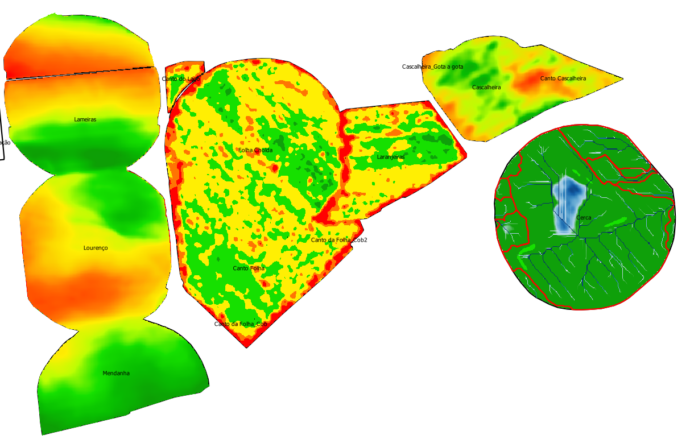In the last article, we analyzed the costs we had with the introduction of sustainable Precision Agriculture. Now we are going to see what the possible gains and the potentials for its adoption are.
The technology which had the greatest impact was automatic driving, where the time and cost were reduced by up to 30%. The greatest savings came from mobilization operations. In sowing and spraying, we had gains of around 10%. In spraying before sowing corn, for example, to apply glyphosate in the cover crop, we had a reduction in time and wasted product of about 20%. Also in terms of fertilization, we registered a direct reduction of 10%. In this case, we also reduced the fertilization prescription by about 15% because we believe that we now have a better distribution with much greater homogeneity. In this way, we can guarantee a much higher efficiency of fertilizers, so the referred reduction of 15% is possible without any loss of yield. In the remaining operations, there were no significant gains.
With the use of drones, it was possible to reduce the herbicide application by 30% in the fields where a second application had to be carried out. In the majority of our fields, we only do one herbicide application (pre-emergent) but in about 20% of the area (it varies a lot from year to year), we have to apply a second dose of herbicide (post-emergence). Now, in these cases, we can do it with much greater effectiveness and a 30% reduction in the cost and time of this operation.
Also with the use of drones, it was possible to reduce irrigation problems. We now have the ability to control if all irrigation systems are working as expected in the projected system. The control of the energy used in irrigation and the respective water consumption, are an extraordinary gain in cost reduction and a great increase in crop production. The management capacity was greatly helped by the introduction of telemetry installed in all irrigation equipment on the farm. Today we can guarantee an increase in water and energy efficiency of at least 10% compared to what we had before adopting precision irrigation.
In most of the operations, we ‘ve had significant gains that lead us to the conclusion that the introduction of precision agriculture is indeed sustainable. The increases in production are more limited. In some fields, we have had increases in production but in others we had a decrease, depending on the years. We attribute to this variability the great impact of the climate variability, but the reduction in costs is a guarantee of increased economic and environmental competitiveness, which have been repeating annually without exceptions. We believe that we can still expect very large gains with the future use of the data collected with telemetry that we now record in all operations. All expenses, income, weather data, etc. The database that we are building has already begun helping us to make much better decisions, based on the analysis and treatment of that data.
In summary, for a total cost of the corn crop of 2.200€/ha, the cost reduction reached 155€/ha which accounts for 7% of the total costs. Considering the cost of implementing all these technologies of around 96€/ha (these calculations were presented in the last article), we have a final result of an increase in yield of 59 €/ ha. Adding to the economical part, we have also achieved greater environmental efficiency and a collection of potential knowledge that will bring us many competitive advantages in the future.

